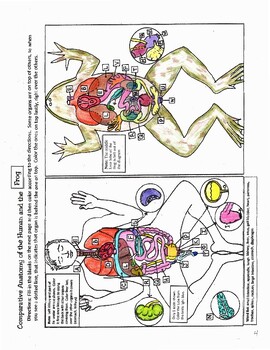Comparative Anatomy of the Human and the Frog
- PDF
Description
This worksheet is the first in a series of comparisons of the human anatomy to that of various vertebrates. It is meant to be either a stand-alone lesson or part of of a dissection lesson plan. Students label the drawing of the human and frog, comparing their organs, and then studies the organs they do not have in common. Students color the diagrams also and answer the questions. They have to research the labeling and answers to the questions or if you wish, you can give them the information page which would give them the info to complete the assignment. It is a 3-page lesson. Answer keys are provided. Comparative anatomy provides evidence of evolution and aids in dissection (actual, paper, or video) which is important in learning morphology in a three-dimensional way.





